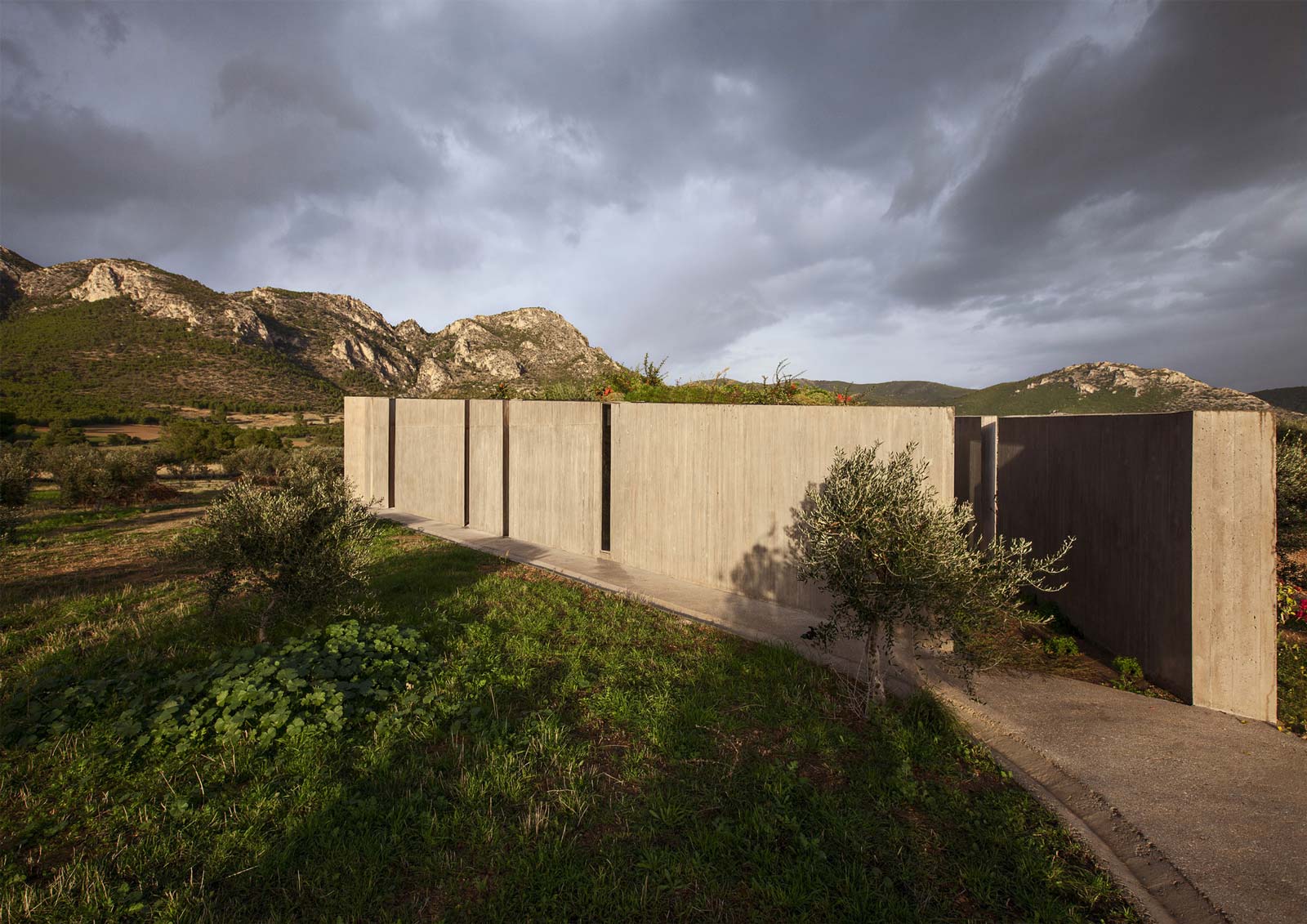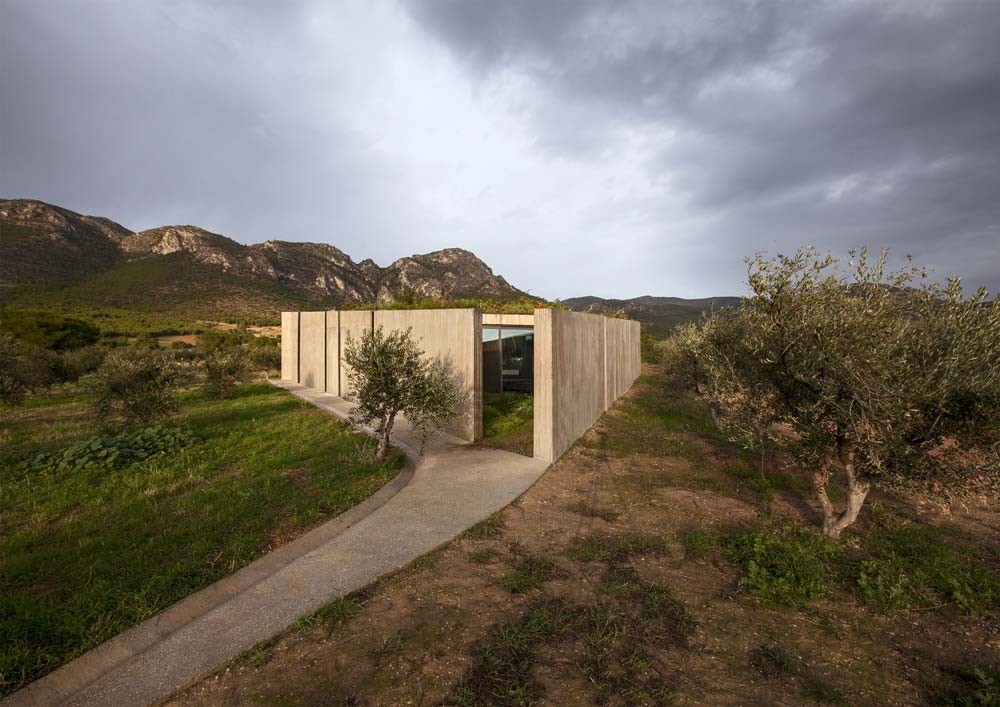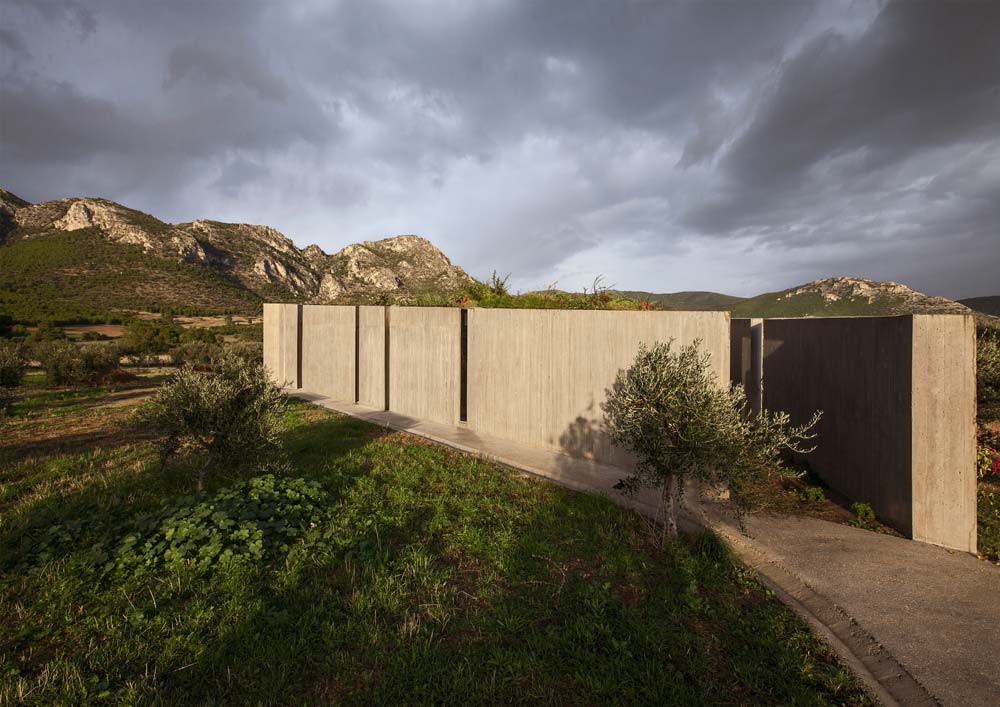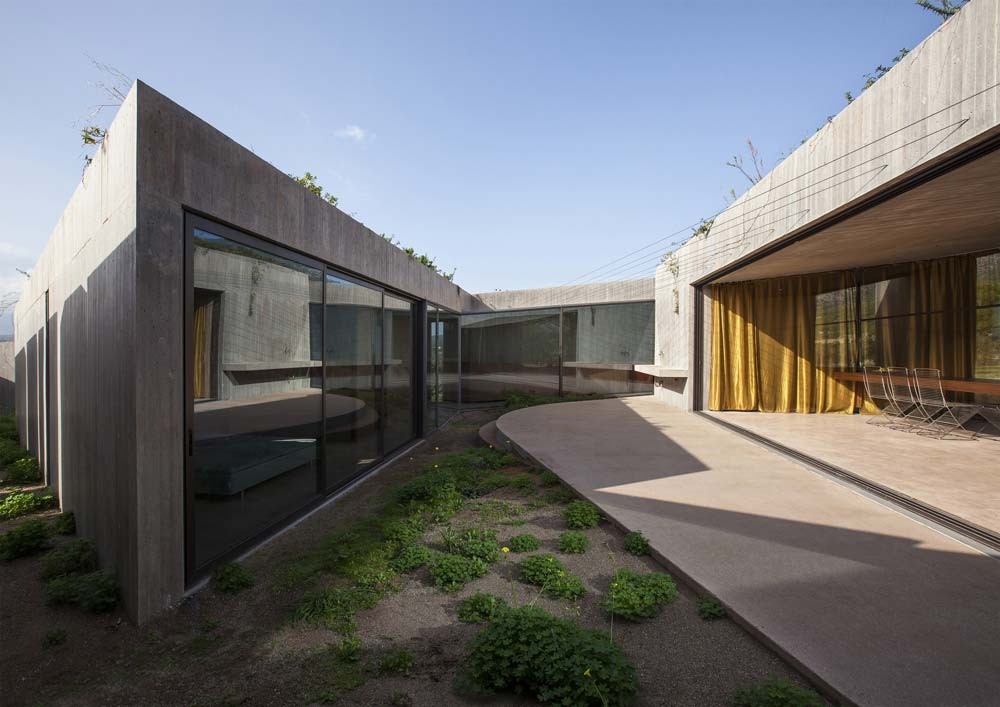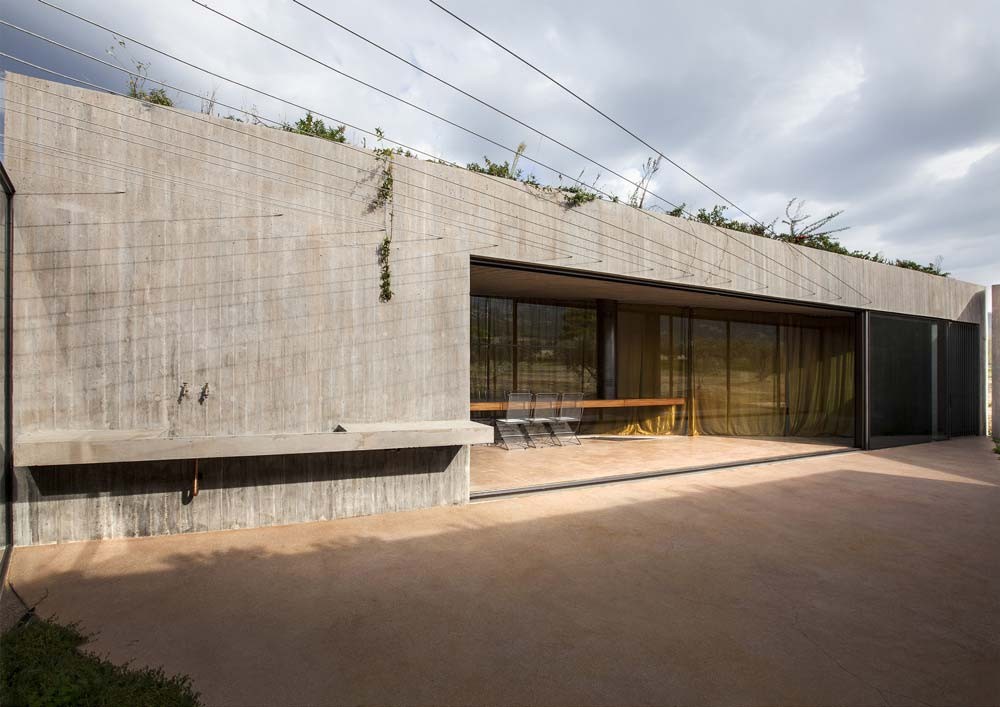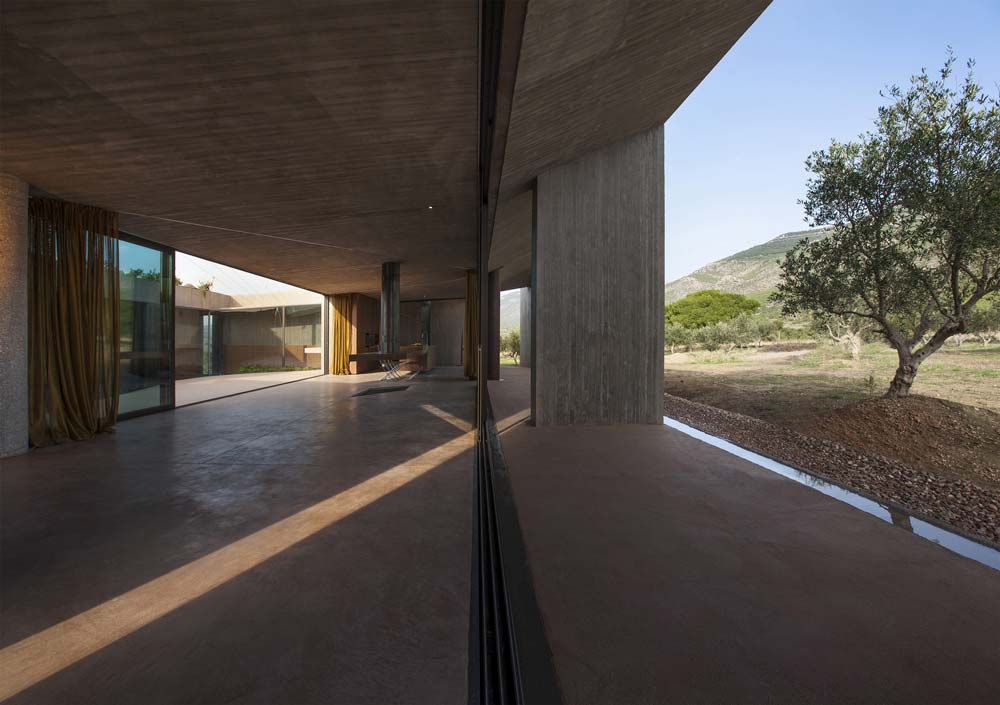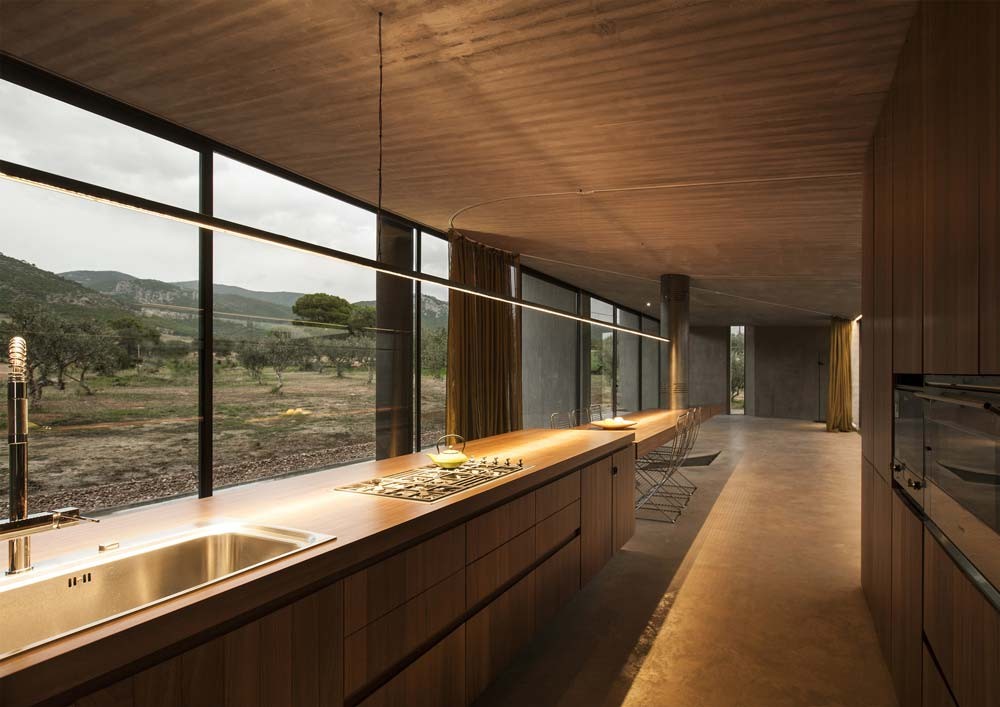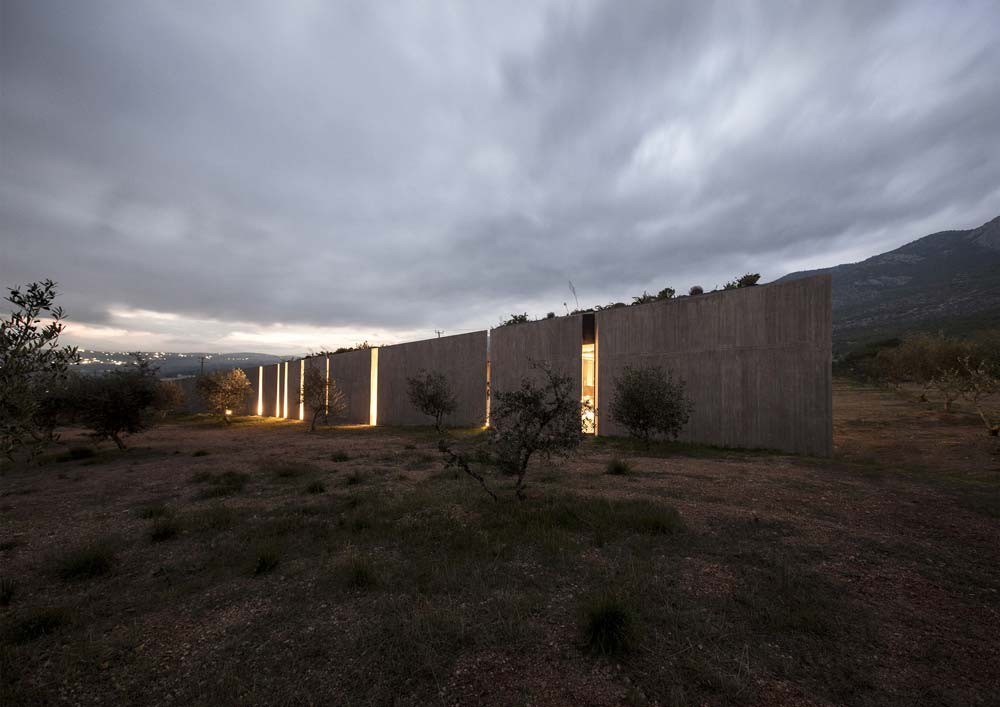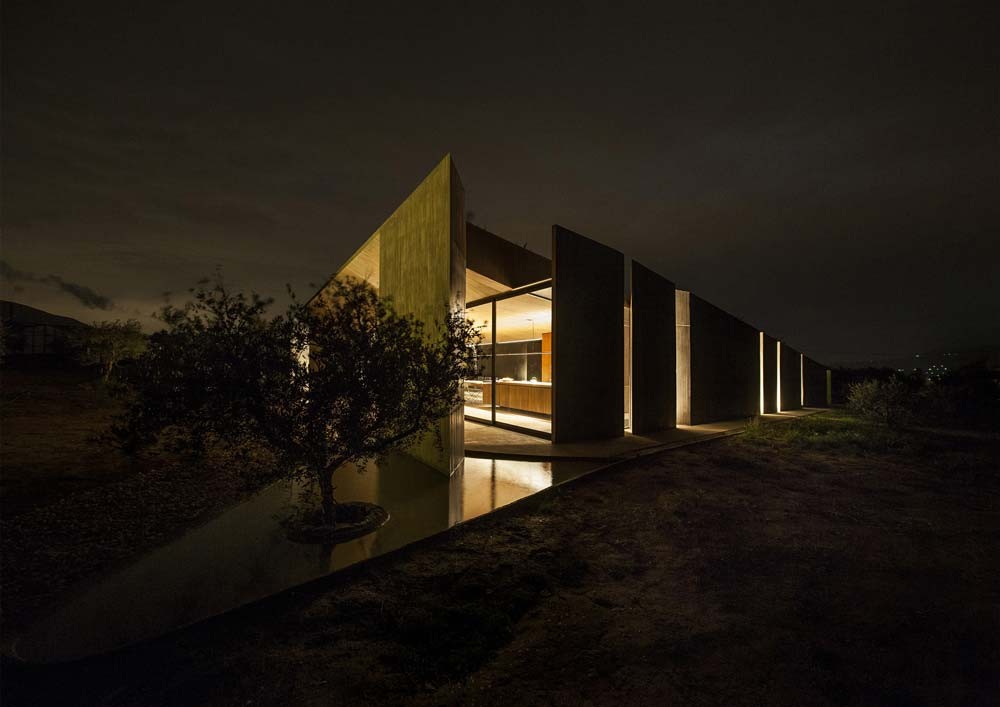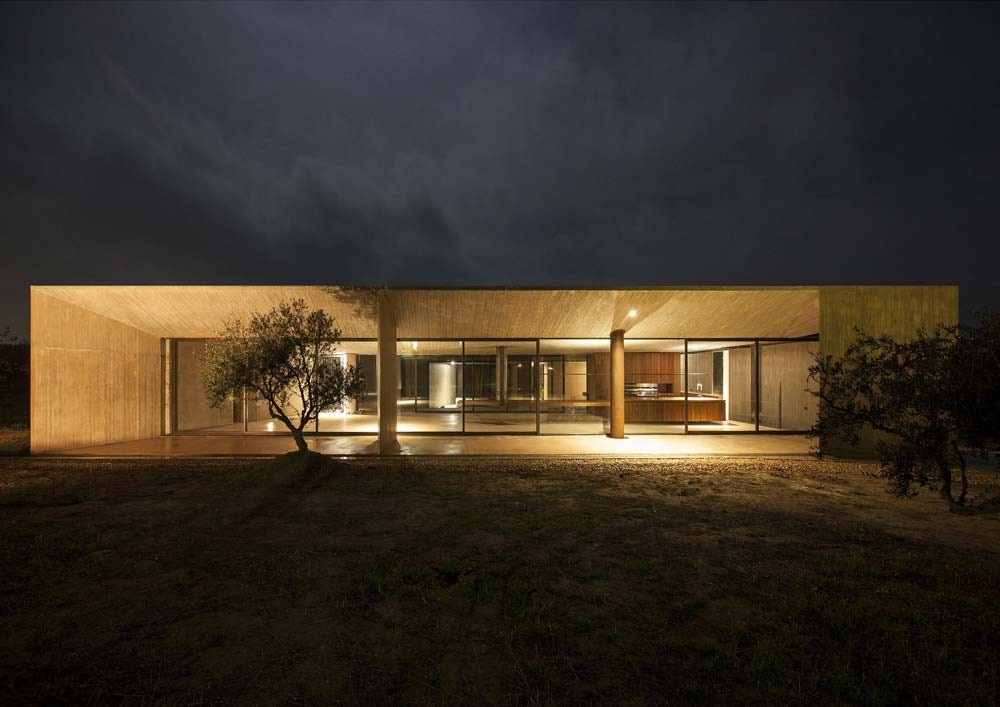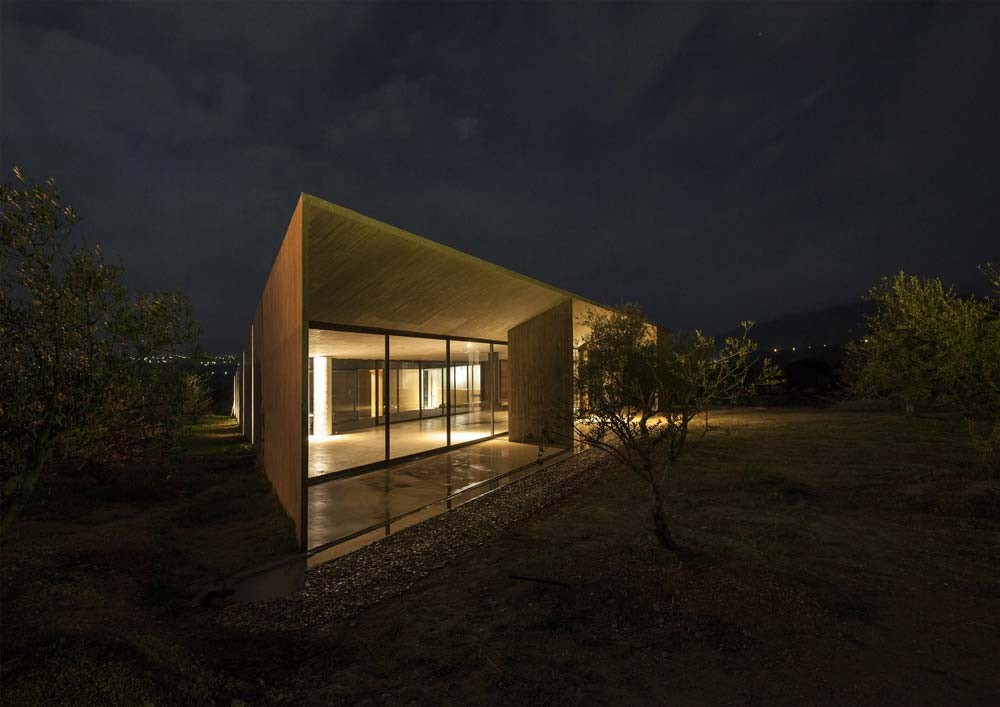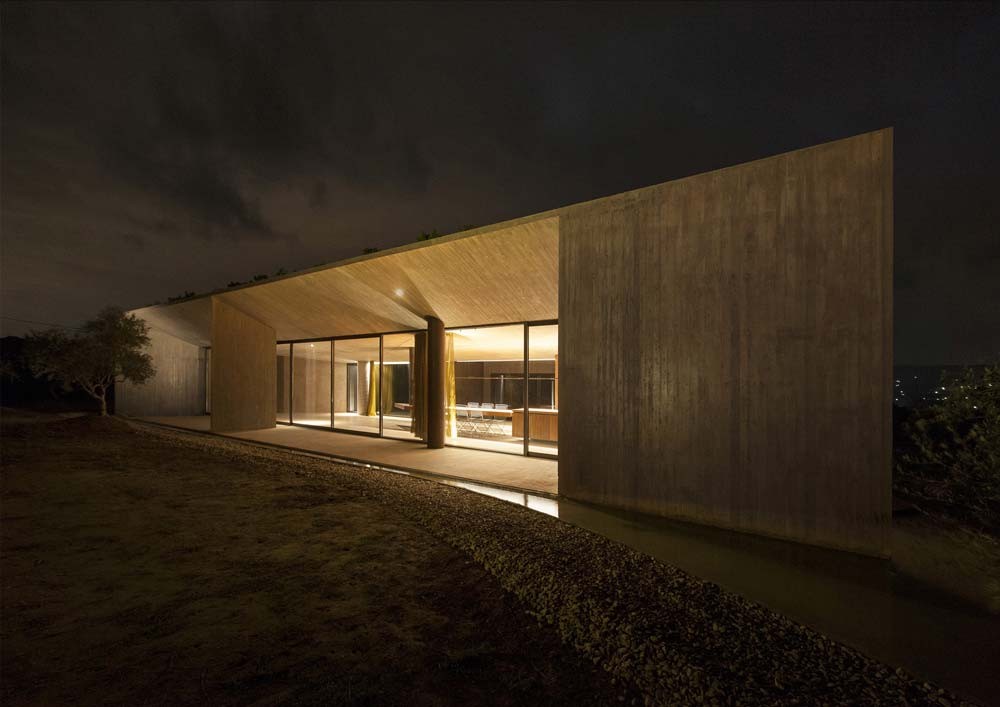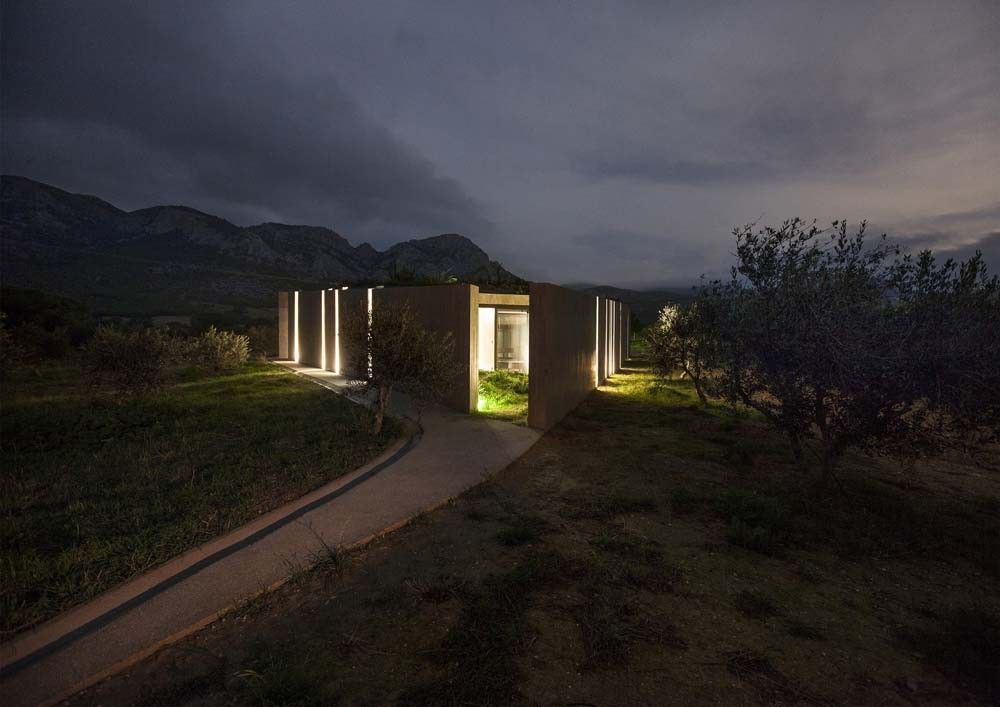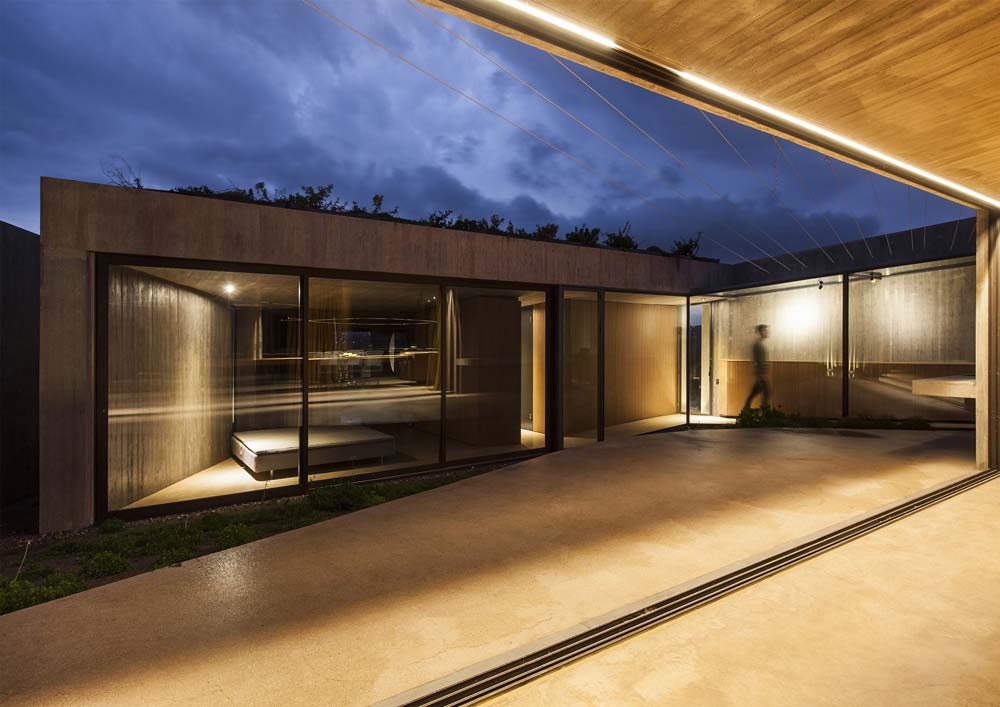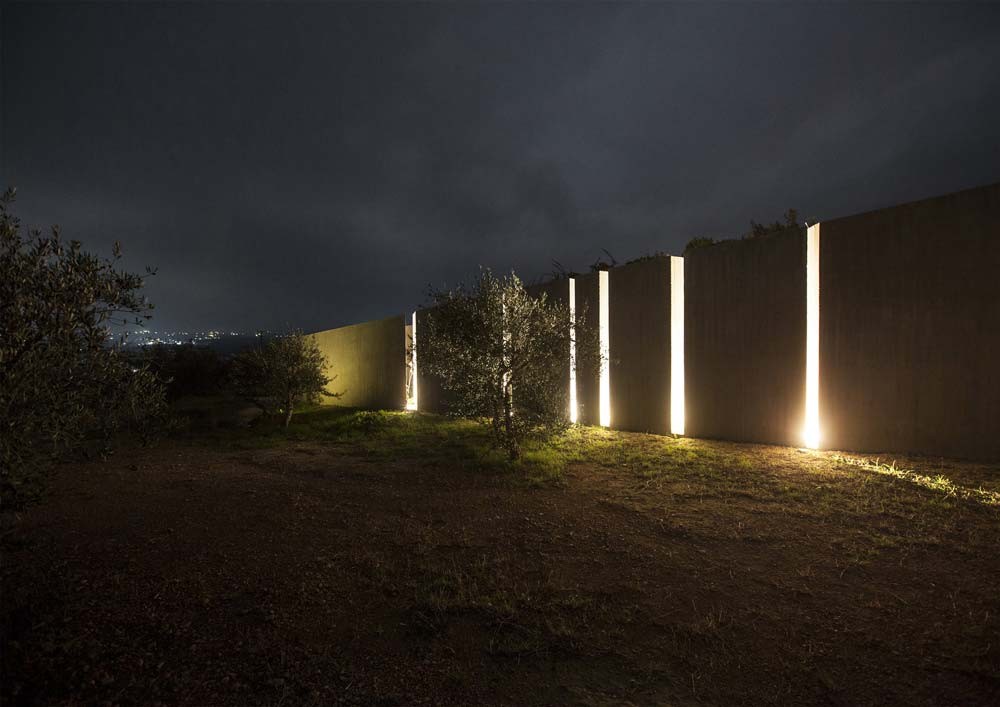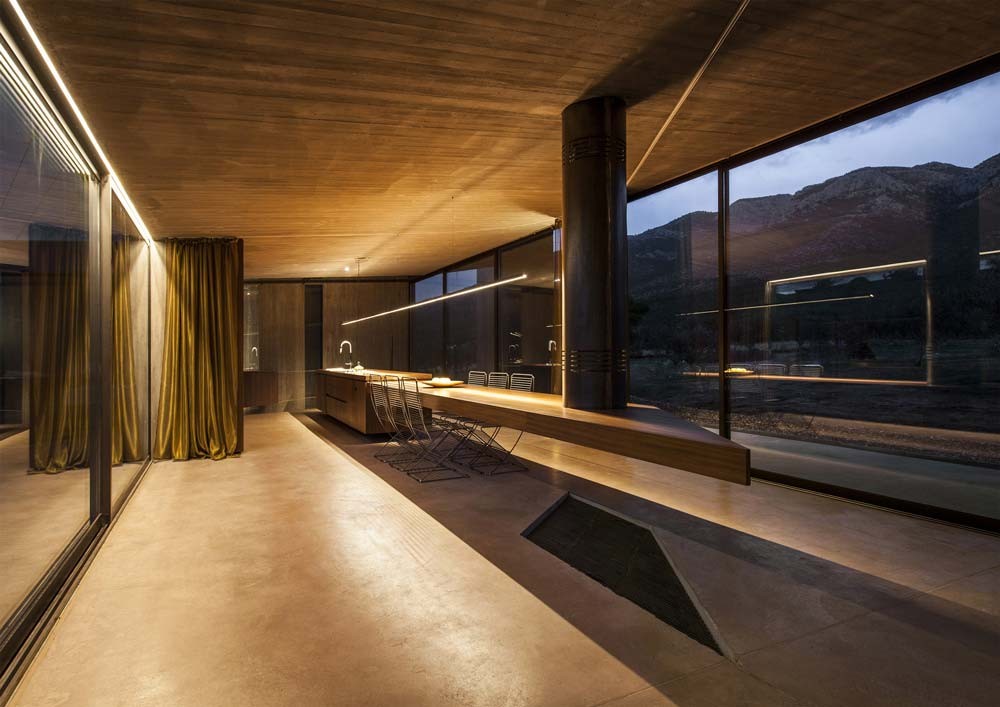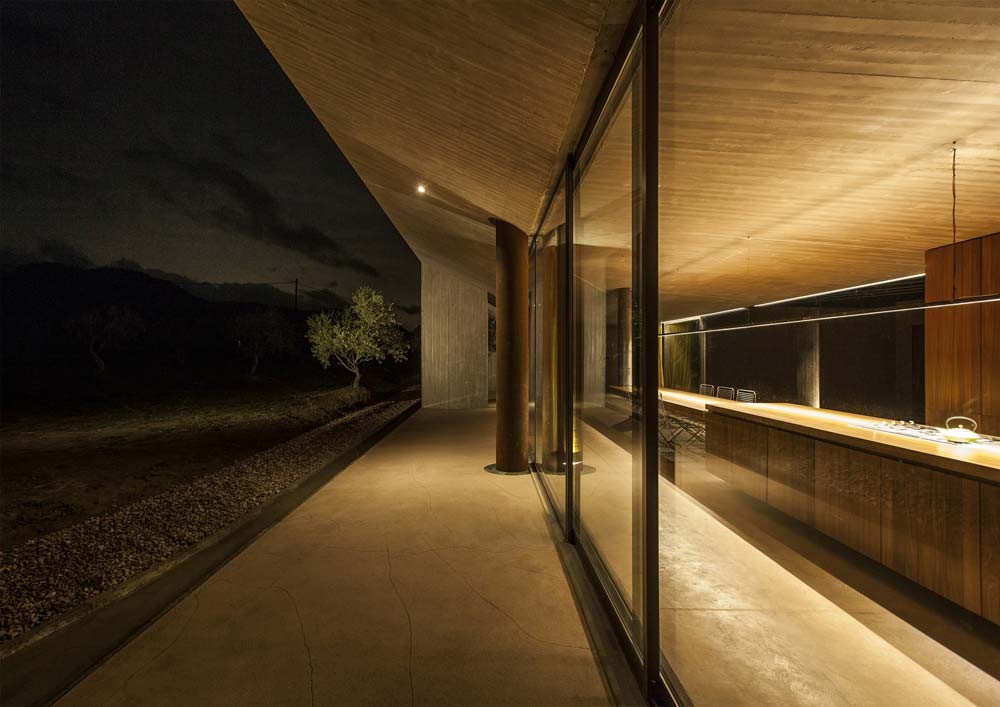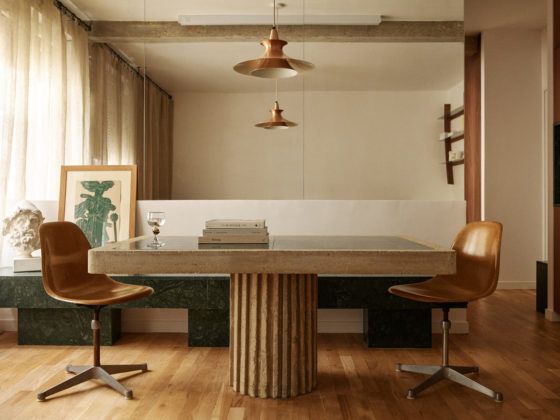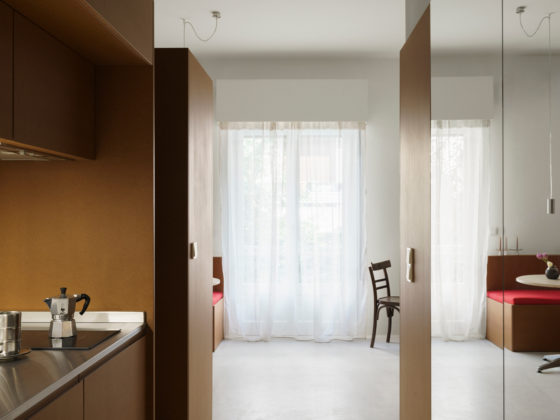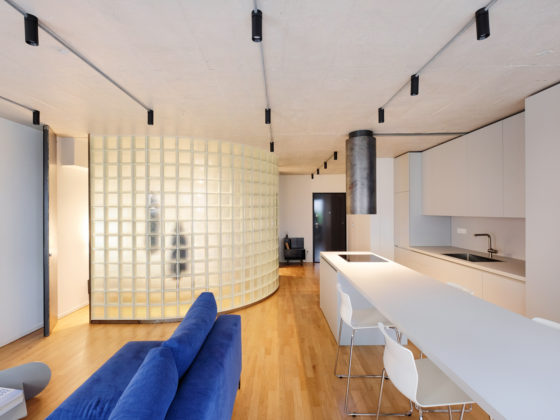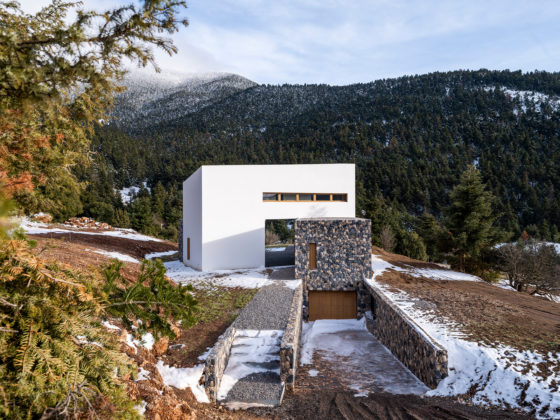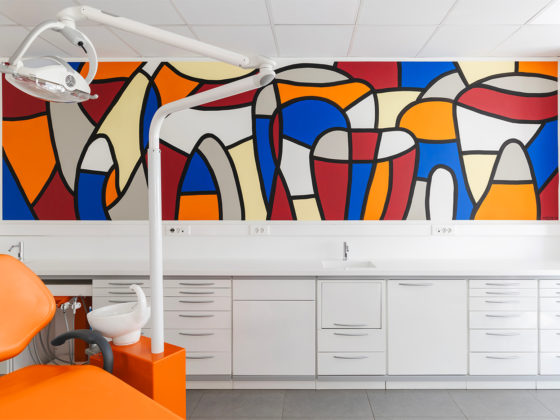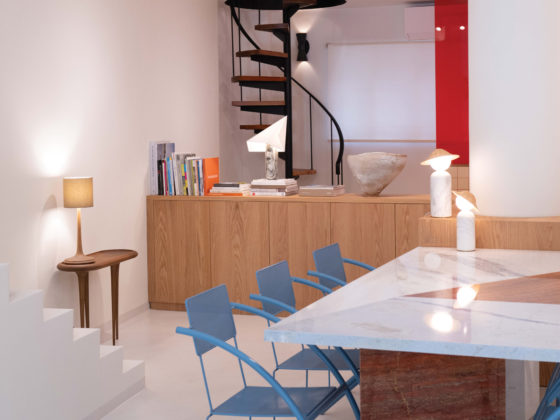This residence in Megara, in an isolated site in the midst of olive trees and the Gerania Mountains, provides a family shelter defined by a distinct triangle plan and a concrete shell. It’s articulated through the creation of two interior courtyards, and its outdoor and indoor spaces are connected through two juxtaposed corridors, a glass roofed and an open-air one. Its courtyards and living spaces lie in a triangle. Two of its trapezoid, inclined sides are deliberately massive and protective while the third opens up to the spectacular view of the mountain opposite it.
As the residence stands in-between the Megara plain and the Gerania Mountains, the architects had to make a choice; although the mountainous volume lies to the north, the residence directs itself there -closely- renouncing the distant plain. It forms a funnel to the mountain out of a triangular plan. Two courts, one at the southern entrance and one in-between the living spaces and the sleeping quarters organize an open-air diversion to the surrounding wilderness: A triangular diversion. The introvert interpenetration of building mass and void attempts to sooth the fact of the residence’s insertion into an almost recluse landscape. Two differently scaled courts constitute the open spaces of the residence, inscribed in the triangular plan. For the triangular coiling attempted here the simplicity is inherent. Furthermore, the triangle is ‘atrium-like’, namely Mediterranean.
The project’s sustainability is attained by passive means, mainly by its inclined, protective greenroof. The vegetation of the roof is adjusted to the Greek climatic conditions, in particular those of Attica; lavender, helichrysum, gauras, drosanthemum, thyme. A self-sustaining, biodiverse ecosystem that allows for the building to gradually become part of the landscape.
The Residence in Megara by Tense Architecture Network was Nominated for the European Union Prize for Contemporary Architecture – Mies van der Rohe Award 2015.
